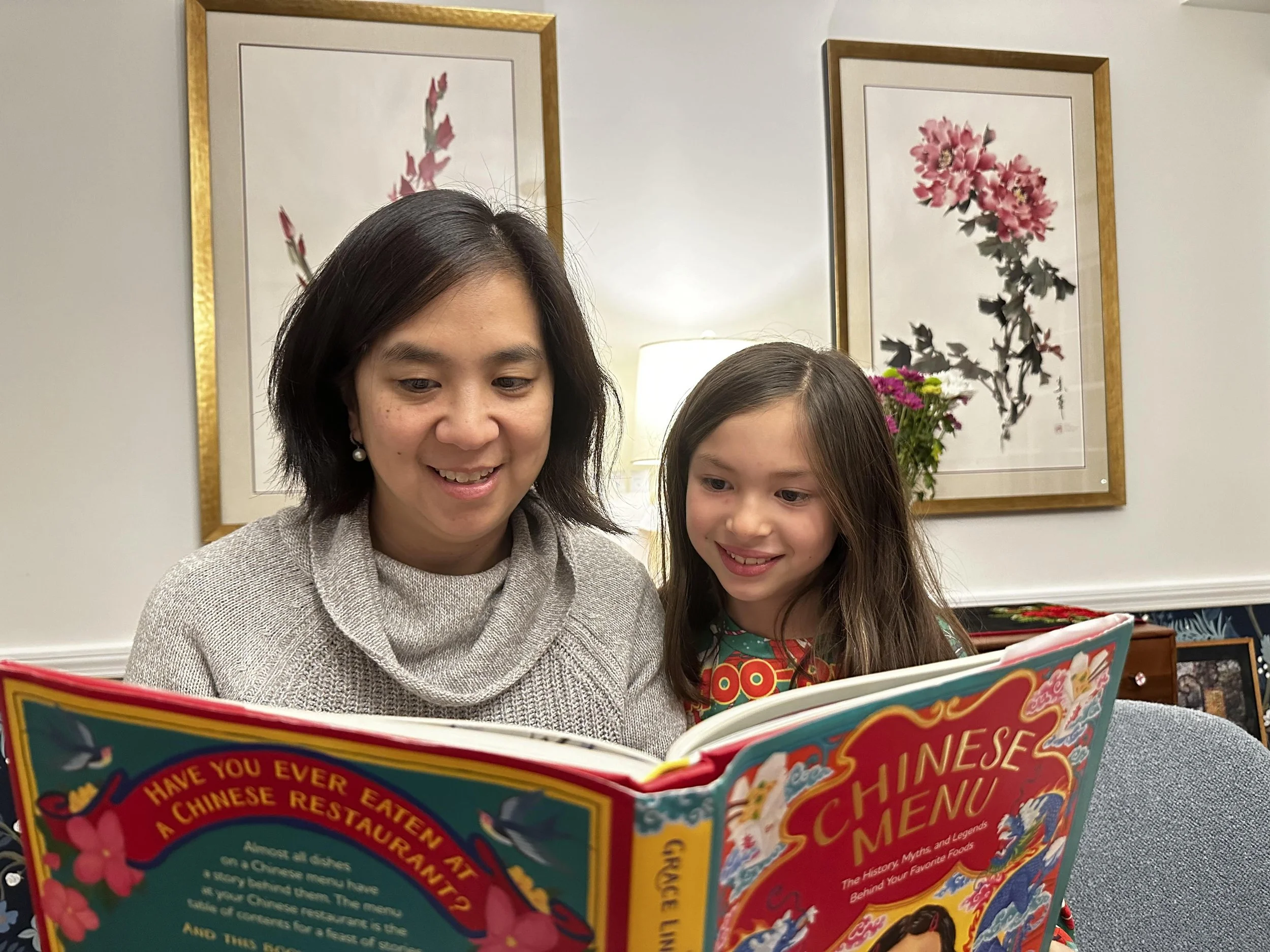Windows and Mirrors (And Why They Matter)
Our Founder, Deb, and her daughter Ellie, reading “Chinese Menu” by AAPI author Grace Lin.
“I don’t get it. You Chinese people are so smart, but you still only use two pieces of wood to eat, and not a knife and fork.”
I remember hearing those words by a friend’s father as I sat in the backseat of their car stunned. What had I just heard? What did this man mean by that? I remember this moment so clearly; I was angry, sad, and confused, but I also wasn’t sure what I should even say in response.
Now, as an adult, I realize clearly this was my first remembered encounter with racism. I wish I could say it was the last time I experienced intolerance or prejudice (it wasn’t), but now I have so many more tools to handle it than that little girl did back then.
Fast forward to yesterday. My daughter Ellie and I started reading Grace Lin’s newest book “Chinese Menu” where she shares the history of chopsticks and why forks and knives aren’t used.
“As chopsticks evolved from bronze to bone to wood, the everyday use of chopsticks was also encouraged in society. Confucius, a great Chinese philosopher, had begun to advise people to use chopsticks at meals. He believed the sharp knife and fork reminded one of weapons - symbols of destruction and brutality. Dining, however, was a noble custom that could and should promote harmony and order. Replacing the metal fork and knife with refined, polished chopsticks could help people develop benevolent, cultured thoughts. Influenced by his teachings, people began to perceive knives on a dining room table as uncivilized.”
Wow! Forks and knives were considered “uncivilized” and chopsticks were “refined.” I never knew that. I was so happy to be able to share this with Ellie. In our house, we use chopsticks, knives, and forks depending on what we’re eating. One is not better than the other. Some days we eat Chinese food like rice and noodles with chopsticks. Other days we eat burgers and pasta with knives and forks. Our silverware lay side-by-side in the drawer, equal partners.
To explicitly have her learn the rich, proud history behind this Chinese tradition was so amazing - and powerful. I wish both my friend’s father and my younger self had access to this history. I can only imagine how different that conversation would have been. Perhaps he would have seen chopsticks and knives and forks as different - but not better - ways to eat food. And if not, perhaps I would have had the courage and the knowledge to share this truth with him.
Reading and learning about your culture, and the cultures of others, is so important. To know where you come from installs pride. To learn about others instills curiosity and empathy. Both are critical. As Ellie gets older, I hope she has the curiosity to learn and read about her own culture and those of others too. We all have stories worth learning about.
And that’s why, at Dancing Panda, we are very intentional about having diverse content. Equity is one of our core values, and we work hard to ensure everyone sees themselves in our materials. We strive to ensure our activities serve as mirrors and windows for the children and families who use them. It’s important for kids to see themselves in their learning materials - these are the mirrors. And stories and learning materials that teach us about others serve as windows into the world around us.
For example, when we drafted a 2nd grade art activity called, “This is Me,” we initially did not have self portraits of diverse artists. After noticing this omission, we worked hard to include women and people of color in our list of portraits. It was also important to us that our website reflects children and families of all backgrounds.
At Dancing Panda, we work to be mindful of our own biases. We have systems and processes in place to ensure our learning materials are both educationally sound and inclusive. We’re not perfect by any means, but we continually strive to produce both high-quality and diverse materials for our families.
Hopefully, my daughters, Maddie and Ellie, and other kids, will never be sitting in the backseat of a car and hear what I heard. Hopefully, there will be more authors and illustrators like Grace Lin and my friends Joyce Wan and Misa Saburi, who will share their stories and their truths. And hopefully, quality diverse books and learning materials will be the norm and not the exception.

